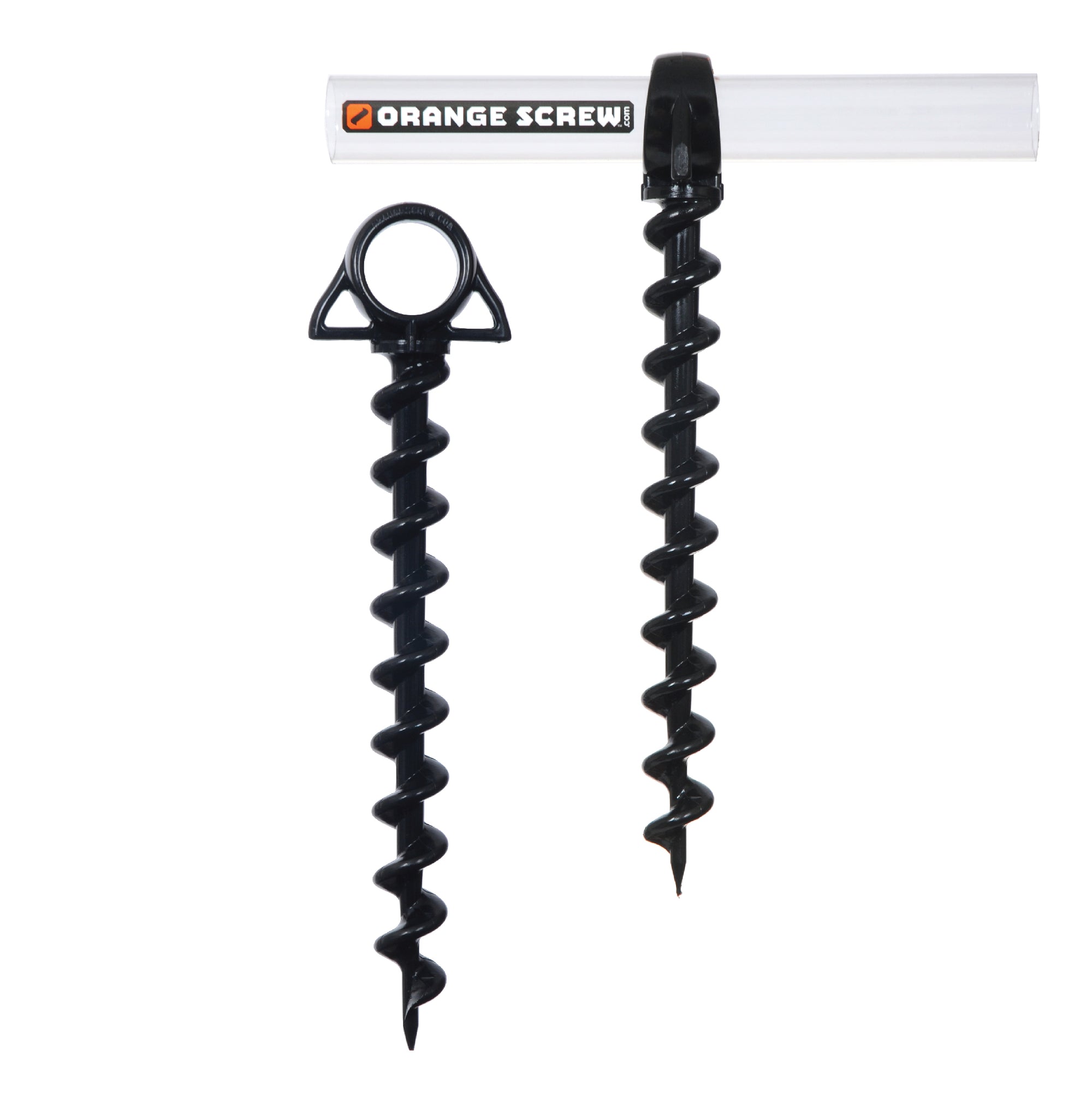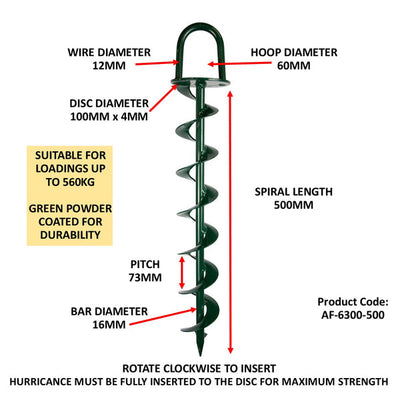Top Methods to Install a Ground Anchor for Maximum Strength
Top Methods to Install a Ground Anchor for Maximum Strength
Blog Article
Explore the Different Sorts Of Ground Anchor for Your Next Project
When embarking on a building and construction or landscape design project, understanding the various types of ground anchors available is crucial to ensuring both security and longevity (Ground Anchor). From auger supports, which master varied soil problems, to risk supports designed for short-term installments, the choices are numerous. Additionally, concrete and screw supports present one-of-a-kind benefits in specific circumstances, while deadman anchors are customized for applications requiring resistance to lateral pressures. The option of an appropriate support kind can considerably influence the total success of your job, triggering further exploration into their respective benefits and applications.

Auger Anchors
Auger anchors are a preferred selection in numerous construction and landscaping projects due to their distinct layout and effective securing abilities. These supports contain a helical screw-like shaft that is driven into the ground, enabling for a steady and safe and secure hold. The spiral layout assists in very easy installation and maximizes resistance against lateral forces, making auger anchors particularly effective in applications such as fence, short-lived structures, and disintegration control.
The installment process of auger anchors is fairly simple. Auger supports can be easily eliminated and reused, which adds to their cost-effectiveness and sustainability.
Among the considerable advantages of auger supports is their capability to distribute lots evenly throughout the surrounding soil, decreasing the risk of soil disturbance and minimizing environmental influence. In addition, they are less at risk to heaving or loosening over time contrasted to traditional anchoring approaches. Auger anchors are a superb choice for tasks calling for reputable and sturdy anchoring options.

Risk Anchors
When it concerns safeguarding frameworks in a selection of exterior applications, stake supports provide a reliable and simple solution. These anchors are normally built from long lasting materials such as steel or aluminum, made to withstand ecological tensions while giving optimal stability. Their basic design enables fast installation, making them a suitable choice for long-term or short-term anchoring demands.
Risk anchors are especially beneficial in protecting tents, canopies, and other lightweight structures against wind and weather. They work by being driven right into the ground at an angle, creating a strong hold that stands up to pull-out forces - Ground Anchor. The performance of stake anchors depends on a number of elements, consisting of soil type, dampness material, and the angle of installation
For included safety and security, numerous stake supports include attachment factors for straps or ropes, enabling for stress changes as required. In applications such as landscaping or building, they can effectively support devices or structures on irregular surface. Overall, risk supports supply a cost-effective and flexible option for safeguarding numerous outdoor installations, making them a preferred option for contractors and DIY enthusiasts alike.
Concrete Anchors
Concrete supports supply a durable solution for safeguarding structures to concrete surfaces, ensuring stability and safety in numerous applications. These supports are important for tasks ranging from domestic building and constructions to large-scale industrial installments. They are available in different types, including growth supports, adhesive anchors, and undercut supports, each developed for specific lots needs and ecological conditions.
Glue anchors utilize high-strength epoxy or resin to bond the support to the concrete, offering superior load-bearing abilities, specifically in broken concrete scenarios. Undercut supports develop an unique form within the concrete, supplying phenomenal holding power, specifically in applications where tensile loads are widespread.
Selecting the proper concrete support includes considering variables such as the weight of the load, the condition of the concrete, and ecological conditions. Proper installment methods are crucial to guarantee optimal efficiency and integrity. When carried out properly, concrete supports dramatically enhance the architectural stability of different jobs, making them essential in modern construction methods. Comprehending the particular needs of your job will assist in choosing the right kind of concrete anchor for the job.
Screw Anchors

Screw anchors are a versatile securing service that can be successfully utilized in a selection of applications where traditional concrete supports might not suffice. These supports include a helical layout that permits them to be conveniently driven into the ground, making them suitable for use in dirt and various other substrates. Their distinct structure gives outstanding holding power and resistance to pull-out pressures, making them ideal for countless tasks, from landscape design to structural assistance.
Among the primary advantages of screw anchors is their convenience of installation. They require marginal equipment and can usually be installed without the demand for excavation, which saves both time and labor expenses. Additionally, screw supports can be removed and reused, supplying a sustainable solution for momentary applications.
Screw anchors are specifically useful in locations where soil conditions are testing, such as sandy or loose soils. Their capacity to be mounted at differing depths find more info permits modification based upon particular task requirements. Generally, screw supports give a reliable and reliable anchoring method, making them an exceptional selection for professionals and designers seeking effective options for their projects.
Deadman Anchors
Deadman supports work as a durable option for maintaining structures in tough problems, particularly where conventional anchoring techniques may drop short. These supports include huge, hefty things hidden underground, which develop resistance against side pressures. The design generally includes a horizontal part, such as a block of concrete or a steel plate, hidden in the dirt, to which cords or straps are connected.
The effectiveness of deadman anchors hinges on their capability to distribute tons over a bigger location, minimizing the risk of failing in unpredictable soil conditions. They are particularly valuable in applications such as maintaining walls, momentary frameworks, and incline stablizing, where soil motion can compromise the integrity of the structure.
Setup of deadman supports needs cautious preparation to guarantee they are positioned at the correct depth and positioning, optimizing their load-bearing capacity. While they might require more labor and product than light-weight anchors, their integrity in unfavorable conditions makes them vital for long-lasting tasks. Furthermore, deadman anchors are flexible and can be adjusted to different applications, making them a best selection for engineers why not check here dealing with special difficulties in their jobs.
Verdict
Auger supports excel in varied soil conditions, while risk supports suit short-lived applications. For concrete surface areas, development and glue Full Report anchors offer reputable alternatives, and screw anchors use convenience in difficult terrains.
Furthermore, concrete and screw supports existing special benefits in certain situations, while deadman anchors are customized for applications calling for resistance to side pressures - Ground Anchor.Auger supports are a popular selection in numerous construction and landscaping projects due to their distinct design and efficient anchoring abilities. They come in different kinds, consisting of growth anchors, sticky supports, and undercut anchors, each developed for certain lots needs and ecological conditions
Glue supports make use of high-strength epoxy or resin to bond the anchor to the concrete, providing remarkable load-bearing abilities, especially in split concrete situations. Overall, screw supports offer a trustworthy and effective anchoring technique, making them an excellent option for specialists and designers looking for efficient services for their tasks.
Report this page